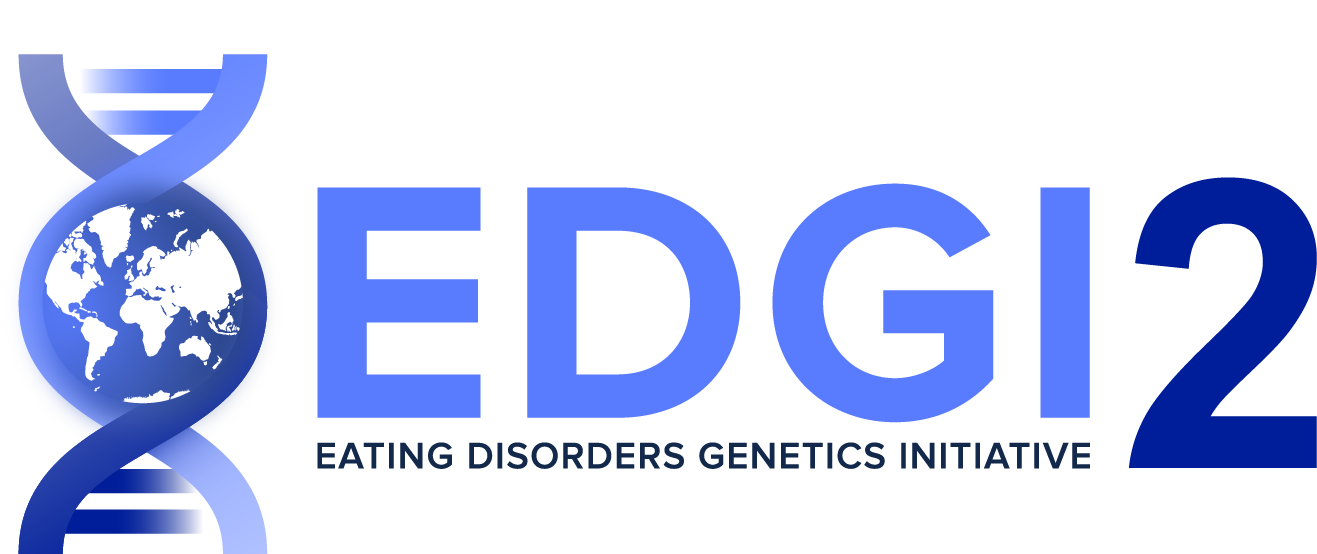- An eating disorder is a complex mental illness that for some, can lead to severe and permanent physical complications, and even death.1
- In 2023, 1.1 million Australians were living with an eating disorder, equating to one in 23 people or almost five per cent of the Australian adult population.2
- The prevalence of eating disorders appears to be on the rise, with a 21 per cent increase in the prevalence of disordered eating behaviour observed in Australian communities over 11 years.2
- Eating disorders can affect anyone, from any gender, or cultural background.1
- In 2023, 27 per cent of Australians with an eating disorder were under 19 years of age, 12 per cent higher than in 2012.2
- Importantly, eating disorders among men are significantly under-diagnosed.2
- Like women, men experience disturbances in body image, binge eating, and maladaptive weight/shape control behaviours.3
- Indeed, the prevalence of binge-eating disorder may be nearly as high in men, as in women, and the prevalence of extreme weight control behaviours, such as extreme dietary restrictions and purging, may be increasing more rapidly in men than women.3, 4
- Some research suggests those who identify as lesbian, gay, bisexual, transgender or gender diverse may be at heightened risk of developing eating disorders.5, 6
- People experiencing some eating disorders may hold an inaccurate perception of their body size and shape, and attempt to control their weight and appearance through excessive dieting, exercising, and/or purging.2, 7
- Eating disorders are not a choice – they are serious illnesses.8
- There are a several types of eating disorders, including anorexia nervosa, bulimia nervosa, binge-eating disorder, Avoidant Restrictive Food Intake Disorder (ARFID), and other specified feeding or eating disorders (OSFED).9
- Many factors influence eating disorders, including genetics, developmental transitions (including puberty, childbirth, and menopause), thinking styles (such as perfectionism), body dissatisfaction, and sociocultural pressures to be thin.10
- Eating disorders cause significant distress to the lives of an individual, their family, carers, partners and friends.11
- Commonly co-occurring conditions associated with eating disorders include mood disorders (such as depression), anxiety disorders (especially social anxiety disorder and obsessive-compulsive disorder; OCD), substance abuse disorders (such as alcohol problems), and personality disorders.12, 13
- Medical complications of eating disorders include cognitive impairment, heart complications, growth retardation and osteoporosis.13, 14
- Those with an eating disorder are at a higher risk of mortality. In 2023, there were 1,273 premature deaths in Australia as a result of an eating disorder.2
- Eating disorders can improve with treatment and time. Recovery is possible for everyone, regardless of severity or stage of illness.15, 16
- In 2023, the total socio-economic cost of eating disorders was AUD 66.9 billion in Australia.2
About anorexia nervosa
- Anorexia nervosa is a serious and complex mental disease with psychiatric and physical symptoms.17, 18
- The peak age of onset of anorexia nervosa is in early to mid-adolescence, but may occur at any age, including in childhood.19
- Anorexia nervosa is characterised by the severe restriction of food intake, and generally results in significant (and dangerous) weight loss.20
- Factors contributing to the development of anorexia nervosa are complex, and include a strong genetic component. Genes can be triggered by environmental influences, such as dieting or extreme exercise.21, 22
- Personality traits of perfectionism and fear of failure, low self-esteem, and emotion avoidance are common among those living with anorexia nervosa.20
- People living with anorexia nervosa often adhere to intense exercise routines.23, 24
- In 2023, there were 38,711 Australians living with anorexia nervosa.2
- In 2023, mortality rates were highest among those with anorexia nervosa versus other eating disorders.2 Medical complications are the leading cause of death, followed by suicide.2, 25
- Anorexia nervosa claims the lives of approximately 450 people in Australia each year.26
- Of those living with anorexia nervosa, around 90 people are expected to die from suicide.26
About bulimia nervosa
- Bulimia nervosa is characterised by recurrent binge-eating episodes (consumption of unusually large amounts of food in a relatively short space of time) followed by compensatory behaviours.17
- In bulimia nervosa, age of onset is more commonly seen in later adolescence and young adulthood.27, 28
- According to the DSM-5 criteria, to be diagnosed with bulimia nervosa, a person must display:17
- Recurrent episodes of binge eating, characterised by eating in a discrete period of time and consuming larger volumes of food than what most people would consume during a similar period of time, and under similar circumstances;
- A sense of lack of control over-eating during the binge episode (e.g. a feeling that one cannot stop eating or control what, or how much they consume);
- Recurrent, inappropriate behaviours to compensate for over-consumption in order to prevent weight gain, such as self-induced vomiting, misuse of laxatives, diuretics, or other medications, fasting, or excessive exercise;
- Binge eating and inappropriate compensatory behaviours occurring at least once a week for three months; and
- Self-evaluation influenced by body shape and weight.
- Accompanied by a sense of loss of control, binges are often followed by feelings of guilt and shame. Binges are often counteracted by self-induced vomiting, fasting, over-exercising and/or misuse of laxatives, enemas, or diuretics.29, 30
- Eating disorders occur at any body size.28 People with bulimia nervosa can remain in the normal weight range, or be slightly under or over the average weight status.31
- Because some people mistakenly assume a person must be under-weight to have an eating disorder, bulimia nervosa and other eating disorders can often be missed, or go unnoticed for some time.15, 32
- In 2023, there were 125,374 Australians living with bulimia nervosa.2
- Around 200 people living with bulimia nervosa are expected to die each year.26
About binge-eating disorder
- Binge-eating disorder involves episodes of consuming unusually large amounts of food, and a loss of control.17, 33
- Similar to bulimia nervosa, the age of onset for binge-eating disorder most commonly occurs in later adolescence and young adulthood, and has a much more even gender frequency.17
- Binge-eating episodes are associated with three (or more) of the following:17
- Eating much more rapidly than normal;
- Eating until feeling uncomfortably full;
- Eating large amounts of food when not feeling physically hungry;
- Eating alone due to embarrassment by how much one is eating; and
- Feeling disgusted with oneself, depressed, or very guilty after over-eating.
- Feelings of guilt, disgust and depression often follow a binge-eating episode.17, 33, 34
- Unlike bulimia nervosa, binge-eating disorder does not involve purging or other compensatory behaviours like excessive exercise. The illness can, however, involve sporadic fasting and repetitive diets, as well as weight gain.35
- In 2023, the were 233,948 Australians living with binge-eating disorder.2
- The lifetime prevalence of binge-eating disorder in Australia is 2.20 per cent.2
About Avoidant Restrictive Food Intake Disorder (ARFID)
- ARFID involves the avoidance and aversion to food and eating, as a result of anxiety or phobia to certain foods.17, 36, 37
- It may also be as a result to heightened sensitivity to sensory aspects of food, such as texture, taste or smell, or lack of interest in food/eating secondary to low appetite.17, 36, 37
- ARFID is a serious eating disorder and more than just ‘picky eating’. Although distinguishing from fussy eating is difficult, adults and children with ARFID generally experience an extreme aversion to certain foods and have a general lack of interest in food or eating.37
- ARFID is more commonly present in childhood and adolescence, however it can occur in people of any age.38
- The main diagnostic feature of ARFID is an eating or feeding disturbance manifested by persistent failure to meet appropriate nutritional and/or energy needs associated with one (or more) of the following:17, 39
- Significant weight loss (or failure to achieve expected weight gain or faltering growth in children);
- Significant nutritional deficiency;
- Dependence on feeding via a tube or oral nutritional supplements; and
- Marked interference with psychosocial functioning.
- ARFID can present in people on its own, but can also co-occur with autism, Attention-Deficit/Hyperactivity Disorder (ADHD) and anxiety.37
- The restriction of food can result in a lack of essential nutrients, leading to serious medical complications, including heart problems, osteoporosis, growth retardation and gastrointestinal issues.37
- Although similar to anorexia nervosa, people living with ARFID do not avoid food or restrict their diet due to a fear of gaining weight or concern over their body, weight or shape.37
- In 2023, there were 31,341 Australians living with ARFID, but this is likely to be an underestimation, as this eating disorder was only added to the DSM-5 criteria in 2013.2
Should you suspect that you, or a loved one, may be living with an eating disorder, speak to your local healthcare professional without delay, or head to www.insideoutinstitute.org.au to complete their online screener and assessment, and to access more information and professional support.
Australian professional patient support services offering 24/7 helpline services include:
- Beyond Blue: 1300 22 4636
- LifeLine: 13 11 14
- Men’s Line Australia: 1300 78 99 78
- Kids Help Line: 1800 55 1800
- Butterfly National Helpline (for anyone in Australia concerned about eating disorders or body image issues: 1800 334 673
- Open 7 days a week, 8am-midnight AEST.
To learn more about the Eating Disorders Genetics Initiative (EDGI) 2, head to www.edgi2.org.au.
References
1. National Eating Disorders Collaboration. What is an Eating Disorder? [Website]. 2024 [Available from: https://nedc.com.au/eating-disorders/eating-disorders-explained/whats-an-eating-disorder].
2. Deloitte AE. Paying the Price, Second Edition: The economic and social impact of eating disorders in Australia. Report commissioned by The Butterfly Foundation. 2024.
3. Dal Brun D, Pescarini E, Calonaci S, Bonello E, Meneguzzo P. Body evaluation in men: the role of body weight dissatisfaction in appearance evaluation, eating, and muscle dysmorphia psychopathology. Journal of Eating Disorders. 2024;12(1):65.
4. Gorrell S, Murray SB. Eating Disorders in Males. Child Adolesc Psychiatr Clin N Am. 2019;28(4):641-51.
5. Solmi M, Monaco F, Højlund M, Monteleone AM, Trott M, Firth J, et al. Outcomes in people with eating disorders: a transdiagnostic and disorder-specific systematic review, meta-analysis and multivariable meta-regression analysis. World Psychiatry. 2024;23(1):124-38.
6. Bell K, Rieger E, Hirsch JK. Eating Disorder Symptoms and Proneness in Gay Men, Lesbian Women, and Transgender and Non-conforming Adults: Comparative Levels and a Proposed Mediational Model. Front Psychol. 2018;9:2692.
7. Mölbert SC, Klein L, Thaler A, Mohler BJ, Brozzo C, Martus P, et al. Depictive and metric body size estimation in anorexia nervosa and bulimia nervosa: A systematic review and meta-analysis. Clin Psychol Rev. 2017;57:21-31.
8. Ivancic L, Maguire S, Miskovic-Wheatley J, Harrison C, Nassar N. Prevalence and management of people with eating disorders presenting to primary care: A national study. Aust N Z J Psychiatry. 2021;55(11):1089-100.
9. National Eating Disorders Collaboration. Types of Eating Disorders and Related Experiences 2024 [Available from: https://nedc.com.au/eating-disorders/types].
10. Barakat S, McLean SA, Bryant E, Le A, Marks P, Aouad P, et al. Risk factors for eating disorders: findings from a rapid review. Journal of Eating Disorders. 2023;11(1):8.
11. InsideOut Institute for Eating Disorders. Managing Distress in Individuals with Eating Disorders 2024 [Available from: https://insideoutinstitute.org.au/assets/managing-distress-in-individuals-with-eating-disorders.pdf].
12. Hambleton A, Pepin G, Le A, Maloney D, Touyz S, Maguire S. Psychiatric and medical comorbidities of eating disorders: findings from a rapid review of the literature. J Eat Disord. 2022;10(1):132.
13. National Eating Disorders Collaboration. Co-occuring conditions 2024 [Available from: https://nedc.com.au/eating-disorders/types/co-occurring-conditions].
14. National Eating Disorders Collaboration. Eating disorders: identification and response 2022 [Available from: https://nedc.com.au/assets/Fact-Sheets/Screening-identification-referral-guide.pdf?2024121105].
15. Miskovic-Wheatley J, Bryant E, Ong SH, Vatter S, Le A, Touyz S, et al. Eating disorder outcomes: findings from a rapid review of over a decade of research. J Eat Disord. 2023;11(1):85.
16. National Eating Disorders Collaboration. Other specified feeding and eating disorders (OSFED), [Available from: https://nedc.com.au/eating-disorders/types/other-specified-feeding-or-eating-disorders#:~:text=Most%20people%20can%20recover%20from,and%20a%20mental%20health%20professional].
17. American Psychiatric Association. Diagnostic and Statistical Manual of Mental Disorders. Fifth ed 2013.
18. Eating Disorders Victoria. Classifying Eating Disorders 2024 [Available from: https://eatingdisorders.org.au/eating-disorders/what-is-an-eating-disorder/classifying-eating-disorders/].
19. Grilo CM, Udo T. Examining the significance of age of onset in persons with lifetime anorexia nervosa: Comparing child, adolescent, and emerging adult onsets in nationally representative U.S. study. Int J Eat Disord. 2021;54(9):1632-40.
20. Walsh BT, Hagan KE, Lockwood C. A systematic review comparing atypical anorexia nervosa and anorexia nervosa. Int J Eat Disord. 2023;56(4):798-820.
21. Cresswell C, Watson HJ, Jones E, Howell JA, Egan SJ. The role of compulsive exercise in the relationship between perfectionism and eating disorder pathology in underweight adolescents with eating disorders. Eat Behav. 2022;47:101683.
22. Himmerich H, Bentley J, Kan C, Treasure J. Genetic risk factors for eating disorders: an update and insights into pathophysiology. Ther Adv Psychopharmacol. 2019;9:2045125318814734.
23. Di Lodovico L, Hanachi M, Duriez P, Gorwood P. The Fitter I Am, the Larger I Feel-The Vicious Circle of Physical Exercise in Anorexia Nervosa. Nutrients. 2022;14(21).
24. Coniglio KA, Cooper M, Selby EA. Behavioral reinforcement of pathological exercise in anorexia nervosa. Int J Eat Disord. 2022;55(2):184-92.
25. Iwajomo T, Bondy SJ, de Oliveira C, Colton P, Trottier K, Kurdyak P. Excess mortality associated with eating disorders: population-based cohort study. Br J Psychiatry. 2021;219(3):487-93.
26. InsideOut Institute for Eating Disorders. About Eating Disorders 2024 [Available from: https://insideoutinstitute.org.au/about-eating-disorders/].
27. Forney KJ, Rezeppa TL, Hill NG, Bodell LP, Brown TA. Examining the placement of atypical anorexia nervosa in the eating disorder diagnostic hierarchy relative to bulimia nervosa and binge-eating disorder. Int J Eat Disord. 2024;57(4):839-47.
28. Eating Disorders Victoria. Eating Disorders Explained 2024 [Available from: https://eatingdisorders.org.au/eating-disorders-a-z/eating-disorders-explained/].
29. Melisse B, Dingemans A. Redefining diagnostic parameters: the role of overvaluation of shape and weight in binge-eating disorder: a systematic review. Journal of Eating Disorders. 2025;13(1):9.
30. National Eating Disorders Collaboration. Bulimia Nervosa 2024 [Available from: https://nedc.com.au/eating-disorders/types/bulimia-nervosa].
31. The Butterfly Foundation. Bulimia Nervosa 2024 [Available from: https://butterfly.org.au/eating-disorders/eating-disorders-explained/bulimia-nervosa/].
32. Brelet L, Flaudias V, Désert M, Guillaume S, Llorca PM, Boirie Y. Stigmatization toward People with Anorexia Nervosa, Bulimia Nervosa, and Binge Eating Disorder: A Scoping Review. Nutrients. 2021;13(8).
33. National Eating Disorders Collaboration. Binge Eating Disorder 2024 [Available from: https://nedc.com.au/eating-disorders/types/binge-eating-disorder].
34. Arexis M, Feron G, Brindisi MC, Billot P, Chambaron S. A scoping review of emotion regulation and inhibition in emotional eating and binge-eating disorder: what about a continuum? J Eat Disord. 2023;11(1):197.
35. Grilo CM, Pittman B. Exploring Dietary Restraint as a Mediator of Behavioral and Cognitive-Behavioral Treatments on Outcomes for Patients With Binge-Eating Disorder With Obesity. Int J Eat Disord. 2024;57(12):2475-81.
36. Van Buuren L, Fleming CAK, Hay P, Bussey K, Trompeter N, Lonergan A, et al. The prevalence and burden of avoidant/restrictive food intake disorder (ARFID) in a general adolescent population. J Eat Disord. 2023;11(1):104.
37. National Eating Disorders Collaboration. Avoidant/Restrictive Food Intake Disorder (ARFID) 2024 [Available from: https://nedc.com.au/eating-disorders/types/arfid].
38. D’Adamo L, Smolar L, Balantekin KN, Taylor CB, Wilfley DE, Fitzsimmons-Craft EE. Prevalence, characteristics, and correlates of probable avoidant/restrictive food intake disorder among adult respondents to the National Eating Disorders Association online screen: a cross-sectional study. Journal of Eating Disorders. 2023;11(1):214.
39. Eating Disorders Victoria. ARFID 2024 [Available from: https://eatingdisorders.org.au/eating-disorders-a-z/arfid/].










